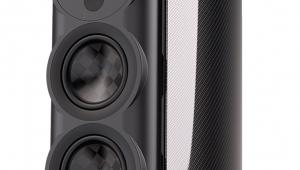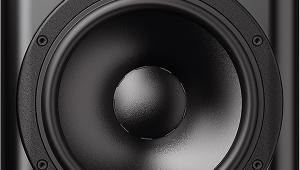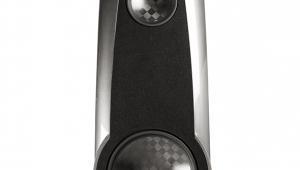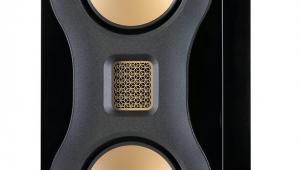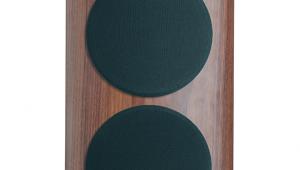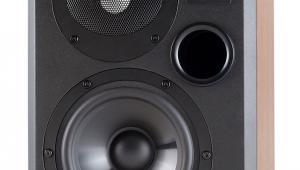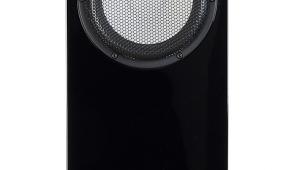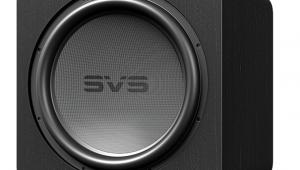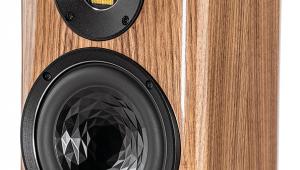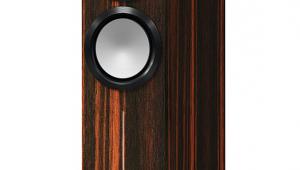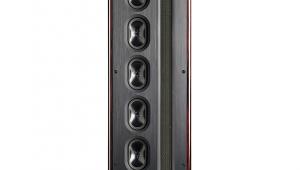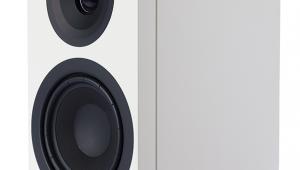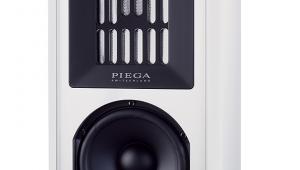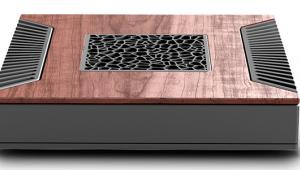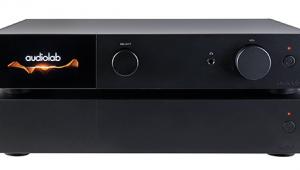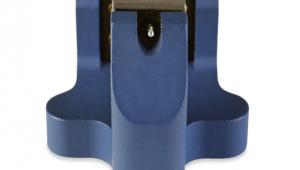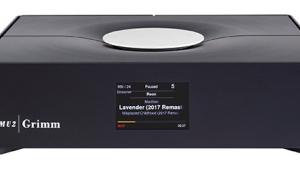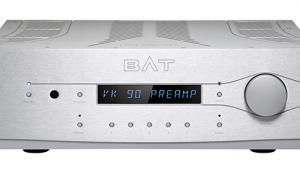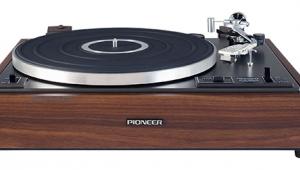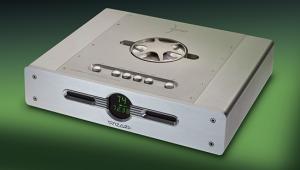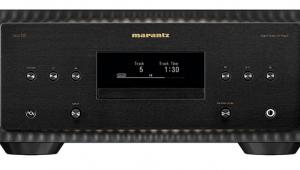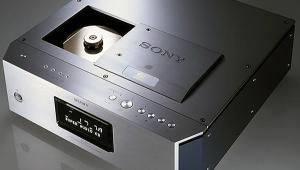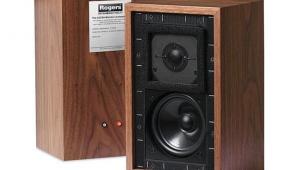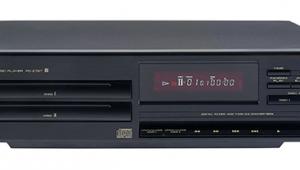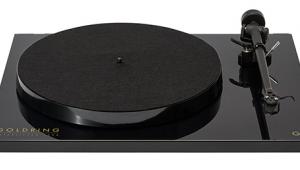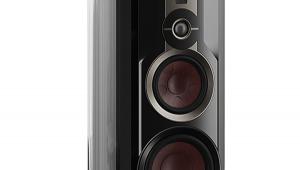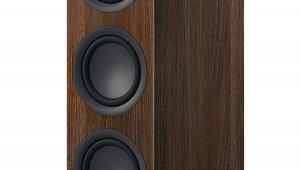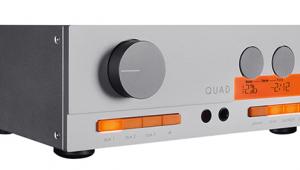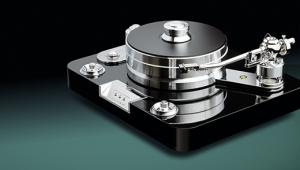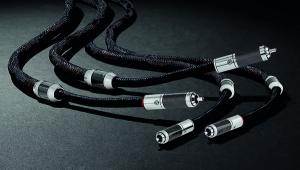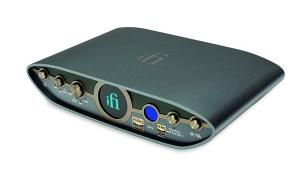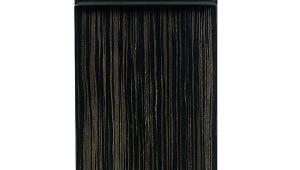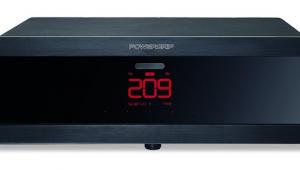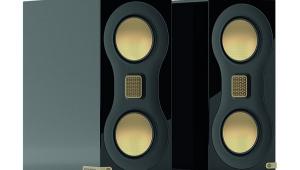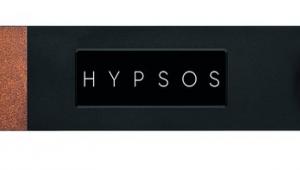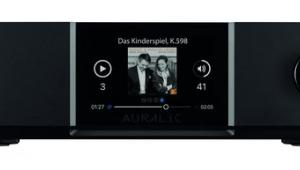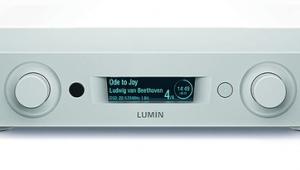PS Audio Aspen FR5 loudspeaker
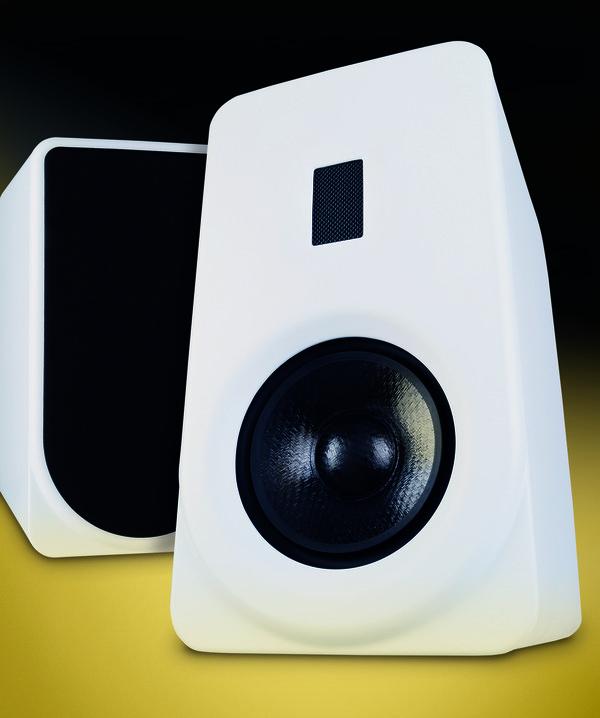
 The final piece in PS Audio's quartet of innovative planar magnetic loudspeakers has arrived and it's quite the cutest of the range, but is it a wolf in sheep's clothing?
The final piece in PS Audio's quartet of innovative planar magnetic loudspeakers has arrived and it's quite the cutest of the range, but is it a wolf in sheep's clothing?
Even if the title isn't familiar, you'll know The March Of Progress by Rudolph Zallinger. Published in a 1965 volume of Life Nature Library and depicting 25 million years of human evolution as a series of side-on illustrations, from the ape-like Pliopithecus to modern man, it popped into my mind when I unboxed PS Audio's Aspen FR5.
Priced £3500 (or £4000 with stands), this is the latest model in a series launched in 2022 with the Aspen FR30 - the American manufacturer's first loudspeaker. The FR30 sells for £30,000 and retains flagship status, but PS Audio has since added three more models, each time adapting the original concept to a smaller cabinet and lower asking price. There's trickledown through the lineup, but, like Zallinger's sketch, the journey from FR30 to FR5 needed the £20,000 FR20 and £10,000 FR10 sandwiched between.
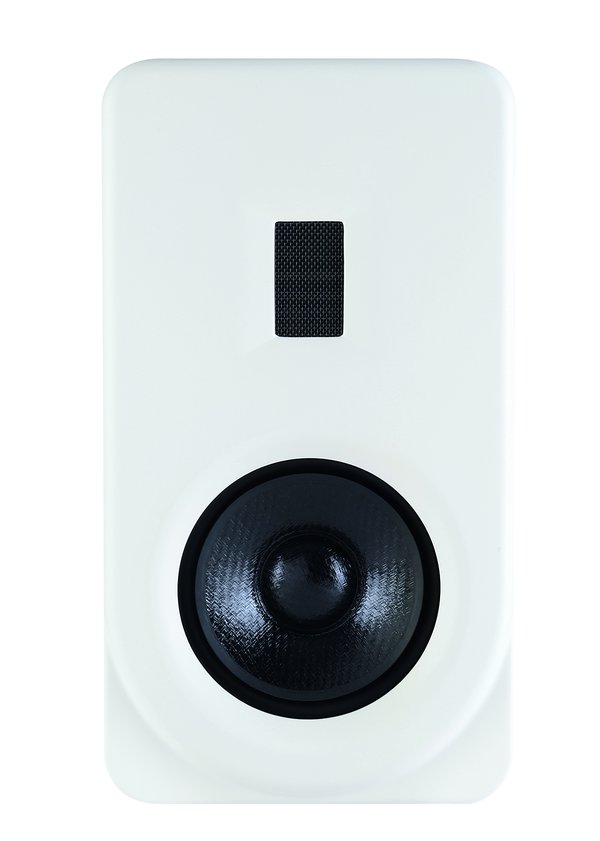
The FR5 sports PS Audio’s now-familiar 64mm planar magnetic tweeter married to a new 165mm woven polypropylene (monofilament) bass/mid cone and supplemented by a 150x230mm ABR on the rear
Planar Speaking
This is because PS Audio has made changes from speaker to speaker, not simply in terms of size and driver configuration, but driver design, including cone material, and positioning too. For example, the FR20 floorstander replaced the alloy-coned woofers of the FR30 flagship with carbon fibre/Rohacell alternatives, while the FR10 changed the material of its ABRs (auxiliary bass radiators) and moved them from side- to rear-facing. And the FR5, as the series' first two-way standmount, introduces yet another new driver type for its bass/mid unit.
But although a lot has changed, there are elements that have stayed the same - and chief among them is this speaker's 64mm planar magnetic (PM) tweeter. Found on all the FR models, it comprises a Teonex thin-film diaphragm with an etched aluminium voice coil situated between magnetic and cloth layers and backed by a damped rear chamber. PS Audio's CEO Paul McGowan has previously told HFN of his 'love for planar drivers', informed in part by his work with Arnie Nudell at Infinity Systems in the 1970s, so it shouldn't come as a surprise that it is this driver that ties the Aspen line together. Developed by PS Audio's Senior Loudspeaker Design Engineer, Chris Brunhaven, the Aspen range's planar magnetic treble (and midrange) drivers are core to both the performance and sound of this speaker family.
Chris was also instrumental in the design of the FR5's new 165mm bass/mid driver. With its convex dustcap and textured finish it looks very different to the carbon fibre/PMI foam sandwich woofers of the FR10 and FR20. Conceived to operate over a wider bandwidth [see PM's Lab Report, p47], the cone is fashioned from a 'self-reinforced' microfibre polypropylene while the motor system is more familiar, again featuring a split magnetic gap, copper Faraday rings, and a Nomex spider with voice coil lead-out wires woven in. Low-frequency extension, to a claimed 30Hz (-6dB) is achieved via the use of a rear-facing ABR, in this instance the same 150x230mm 'racetrack' type as found on the FR10, although that floorstander features three of them.
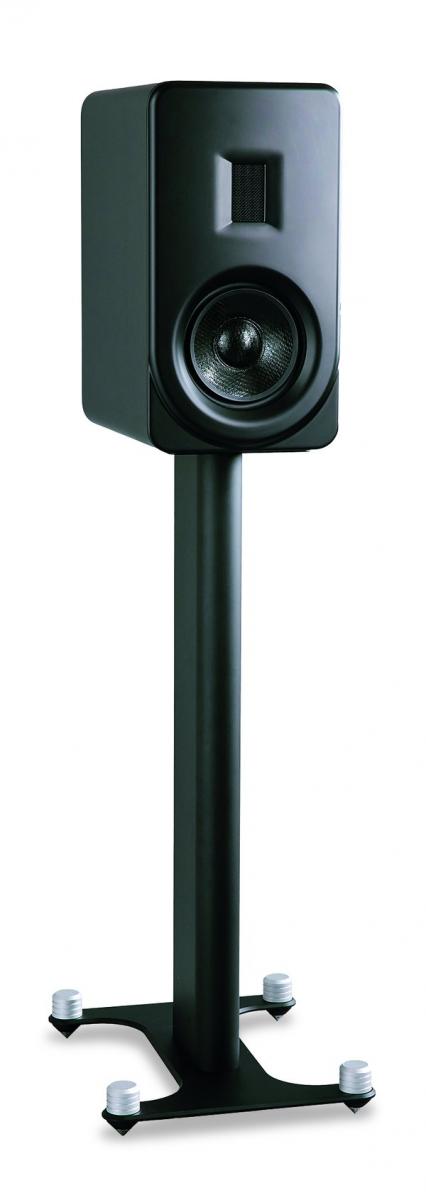
The FR5 is seen here in its Satin Black finish, atop the optional 70cm/18in stand. The stand can be ‘mass loaded’ and includes a cable routing channel in the rear of the column
Fibreglass Facade
Heavy at 12.1kg a piece, the FR5's 20cm-wide, 37cm-tall cabinet is made from MDF, but the front baffle uses a thermoset fibreglass resin, which has enabled PS Audio to sculpt an integrated waveguide for its tweeter, and a surround for its bass/mid. Both drivers are screw-mounted to the main enclosure, which features constrained layer-damped bracing and is further stiffened by four bolts running from front to back. It looks, and feels, rock-solid as a 'knuckle rap' test quickly attests.
Speaking of looks, although PS Audio claims its Aspen range has been '50 years in the making', the FR5, like its stablemates, is a long way removed from the designs of that era in terms of aesthetics. In fact, in its satin white colourway in particular (satin black is an alternative, both finishes getting a seven-layer coating), this standmount calls to mind the clean, uncluttered appearance of an Apple iPod Classic - the kind of speaker Jony Ive might have doodled on a napkin. Black magnetically-attached grilles are supplied, with a semi-circular bottom edge to hug the bass/mid driver's surround, but personally I think these rob the FR5 of some of its visual charm.
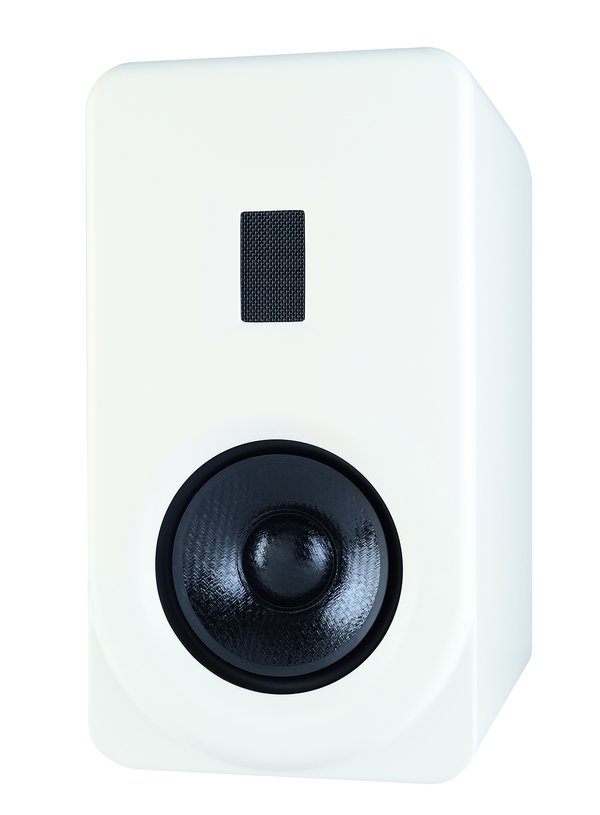
With industrial design by ‘Studio 63’, the FR5’s sculpted cabinet includes a braced MDF shell, with viscoelastic damping, and a thermoset resin fibreglass-composite baffle for the drivers. Seven layers of lacquer provides for a luxurious satin finish
Stand Strong
As mentioned earlier, the speaker can be bought with or without stands. I'd certainly recommend considering them even if you already have your own, because they both complete the look and offer useful cable management. Self-assembly involves fitting the base plates (with spike-tipped feet pre-attached) to the main pillar, and mounting the top plate in one of two positions, depending on whether you want the FR5's cabinet to align with the front or rear of the base. Slim speaker wire can be routed through a hole on the bottom of the base, while a larger opening on the back of the pillar accommodates thicker cables.
Also in the FR5's packaging are sets of adhesive rubber feet to fit to the bottom of the speaker or the top of the stand, and spade-ended jumper leads. The latter must be attached to the speaker's twin sets of binding posts unless you are bi-amping, though the resulting run of red and black cabling looks a little out of keeping with the rest of the FR5's slick appearance. Solid metal links are more commonly employed these days.
It's straightforward to set up the speakers, and PS Audio's manual goes into decent detail regards listening distance and toe-in. The suggestion, as with its other Aspens, is for a minimum 1m distance from side walls and at least 50cm from the rear boundary, plus the cabinets angled so that they're pointing at a space a little beyond your head.
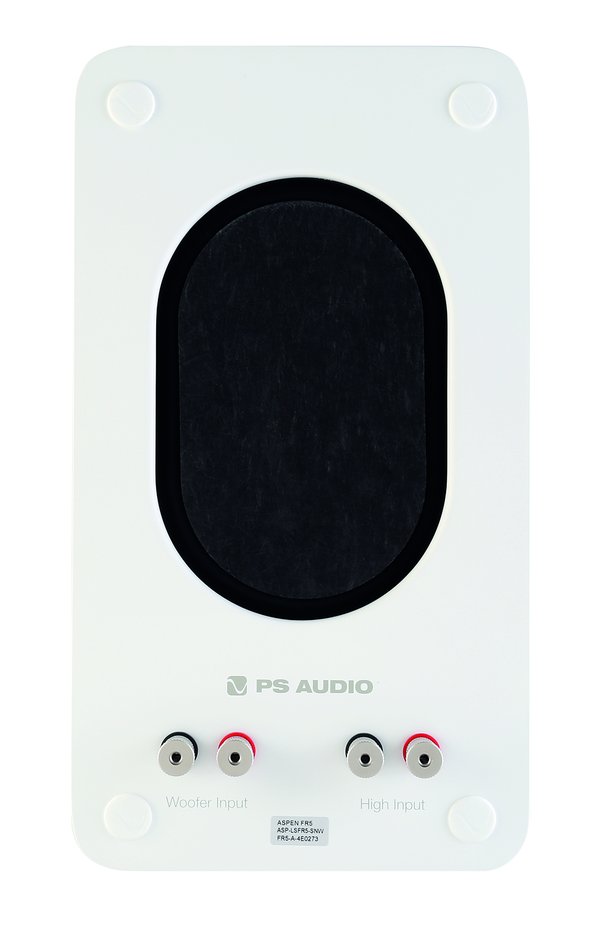
The split 1.75kHz crossover network supports bi-wiring/bi-amping via two sets of 4mm cable terminals. A rear-facing 150x230mm ABR boosts the FR5’s bass output
![]() Sweet Slam
Sweet Slam
Adhere to these positioning guidelines and you'll get the best from the FR5 - and the best, for a speaker at this price point, is seriously entertaining. Yes, there's a limit to its performance in sheer output and scale, but this comes with the compact speaker territory. Elsewhere the FR5 delivers grip, clarity, balance and bass punch to rival models selling for much more.
Using PS Audio's DirectStream MK2 DAC and Air Lens streamer as a source, 'Pour Some Sugar On Me' from Def Leppard's Hysteria [UMC; 44.1kHz/16-bit download] powered through the FR5s with its 1980s excess intact. The slam of the drums, the almost metallic edge to the bassline, the force of the multi-tracked backing vocals - all were presented with weight and attack, while sounding as clean and crisp as the FR5's industrial design (which was commissioned from Studio 63, in fact). Just as striking, however, was the speaker's handling of the stereo spread. This monster hit, famously recorded as an afterthought at the end of the four-year production, finds producer Mutt Lange going to town with electronic effects and soundstage trickery, and is in danger of sounding a bit of mess. Not here.
AC/DC's 'Thunderstruck' [The Razor's Edge; EPC 510771 2], another hard rock anthem, takes a more minimalist approach; guitars, drums, bass and vocal. The FR5's quick feet and control came to the fore, making the rhythm section sound effortlessly tight, while its tweeter was able to pick out each hi-hat hit and cymbal crash. It was a polished presentation from top to bottom, while also serving as a good example of getting positioning right, as sitting directly on-axis emphasised HF details a bit too much.
The FR5's combination of bass/mid driver and ABR ensured the 16th note bassline of follow-up track 'Fire Your Guns' sounded meaty and well rounded, while the deeper bass effects often prevalent in drum 'n' bass and electronica - in this case Dillinja's dark and boisterous 'Soul Control' single [V Recordings; 44.1kHz/16-bit download] - revealed PS Audio's standmount speaker to be a lover of the low octaves. Moreover, the track's various bass details retained their different textures, so avoiding an indistinct sound.
Rainbow Warrior
An ability to bring deep, controlled bass to your music listening could be considered the FR5's calling card, but really this is a loudspeaker that excels with all manner of material. Jane Monheit's cover of 'Over The Rainbow' [Taking A Chance On Love; Sony Classical] might appear superfluous in the face of the primacy of Judy Garland's original, but the way this speaker weaved the string accompaniment beneath Monheit's elegant soprano, resolving fine details, was spine-tingling.
Breaking News
Similarly, the FR5's delivery of Led Zeppelin's 'Going To California' [Led Zeppelin IV; Atlantic 8122796446] was easy on the ear without the detail of Jimmy Page's acoustic guitar being softened or masked. Robert Plant's vocal soared above the shimmering, sweet-sounding backing, fluctuating between rich and powerful low notes and sibilant-free highs. In fact I became so involved in this performance that I was more than startled by the deep, pounding drums that signal the start of 'When The Levee Breaks'.
An area where the FR5 gives ground to larger speakers is in the scale of its soundstage. With a piece like Take That's 'Affirmation', from the band's electro-infused Progress album [Polydor 275 592-7], it didn't manage to fully envelop me in the swirling soundscape behind the David Bowie-esque vocal - the image made was more CinemaScope than IMAX. That said, I was surprised by how easily the FR5 brought into view a keyboard melody I'd often considered a minor background detail, and by the weight and punch of the incessant drumbeat.
Therefore, as also evidenced by its joyful, snappy handling of Artemesia's 'Bits And Pieces' [Hooj Choons HOOJCD031], PS Audio's loudspeaker is great for when you want your listening room to feel like a nightclub at 1am. But what of more audiophile concerns? Given Maria João Pires' recitals of Chopin's 'Nocturnes', a '4D audio' recording at both Munich's Musikhochschule and London's Henry Wood Hall [Deutsche Grammophon 447 096-2], it convincingly evoked the sense of listening at a distance, as piano notes smoothly decayed into an echoey ambience.
On this solo piece the music ebbs and flows at Pires' command, but on Wagner's Das Rheingold [Decca Music Group; 192kHz/24-bit], it is Georg Solti (figuratively) pulling the strings of the whole Vienna Philharmonic. Listening to both pieces back-to-back proved the FR5's chameleonic nature, as it widened its focus on Wagner's prelude ('Vorspiel') to dig deep into the low basses, convey the moving air of the horns, and let the mass of strings build up, and up, to the memorable crescendo. This is a small speaker that makes a big impression.
Hi-Fi News Verdict
PS Audio has moved its Aspen range into more 'mass market' territory with the relatively compact and affordable FR5 - but done so without breaking the mould. Like its siblings, this standmount both looks and sounds lush, and suggests that the company might have missed a trick by not entering the speaker scene earlier. Still, better late than never… and they don't get much better than this.
Sound Quality: 89%

